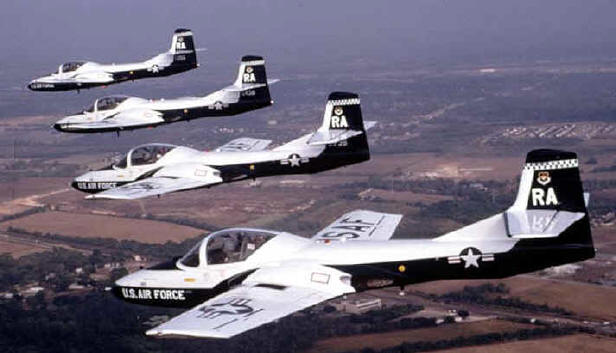|
|
|
 |
The T-37 is a twin-engine primary trainer used for teaching
the fundamentals of jet aircraft operation and instrument,
formation and night flying. Affectionately known as the "Tweety
Bird" or "Tweet," it was the first USAF jet
aircraft designed from conception as a trainer (as opposed to a
modification such as the T-33). Its flying characteristics
helped student pilots prepare to transition to the larger,
faster T-38 "Talon" later in the pilot training
program. Side-by-side seating in the T-37 makes it easier for
the instructor to observe and communicate with the student.
The XT-37 prototype made its initial flight on October 12,
1954, and the pre-production T-37A first flew on September 27,
1955. Following modifications, the T-37A entered operational
USAF service in 1957. In 1959, the T-37B joined the USAF.
Similar to the -A, it had more powerful engines, a redesigned
instrument panel and improved radio communications and
navigational equipment. In time, all -As were modified to -B
standards.
The T-37C, with provisions for armament and extra fuel, was
built for export. Both T-37Bs and -Cs serve the air forces of
several Allied nations. In all, nearly 1,300 T-37As, -Bs and -Cs
were built before production ended in the late 1970s. In
addition, nearly 600 A-37s--attack modifications of the
T-37--were built. The T-37B on display was flown to the Museum
on October 8, 1991.
|
|
